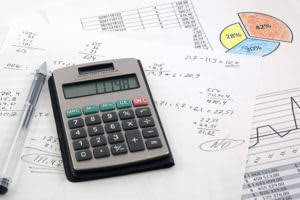
Markup and margin are key terms when you’re working on a pricing strategy – but they’re not easy to understand or use, particularly if you’re a new explain the difference between a markup and a margin business owner. Markup is the percentage amount by which the cost of a product is increased to arrive at the selling price. There are many proven ways to monitor overall business performance, and Key Performance Indicators (KPIs) are one of them. There are several KPIs you should be tracking such as cash flow, revenue, costs, and staff turnover. To ensure the business is on track with its objectives, KPIs are laid out and measured over time.
- For example, let’s say you have a product that costs you $10 to produce.
- The primary difference between markup and margin is in their calculation methods.
- Both markup and margin determine the profit made from each sale, but they differ in their calculation methods.
- And getting them both right could mean optimal profitability which will drive your business towards its financial targets.
- To avoid potentially costly pricing mistakes and cash flow issues, you must first understand the distinction between your margin and your markup, and how to use them to establish appropriate pricing.
- There are many proven ways to monitor overall business performance, and Key Performance Indicators (KPIs) are one of them.
Calculate your financials in Brixx

Markup helps businesses cover their expenses and generate a profit margin by increasing the selling price over the cost. Markup is often used by businesses to set prices based on the cost of production. When calculating markup, businesses want to ensure they cover the cost of producing a product and still make a profit. Markup is expressed as a percentage and is added to the cost price to determine the final selling price.
Profit Margin vs. Markup: An Overview
- You may want to read about the 6 Reasons for Low Profitability and Margins in Businesses.
- Though markup and margin may seem similar, they lead to different pricing and profitability outcomes.
- Margin is a better metric to compare products or services allows you to factor in the different selling prices of each product or service and determine which ones are more profitable.
- Markup refers to the amount added to the cost price of a product or service to cover expenses and profit.
- Remember, a good margin could ensure you’re generating a profit and a good markup can help you set the appropriate price.
For example, if certain products are not selling as quickly as expected, businesses might consider adjusting the price to boost sales. Conversely, products that are in high demand or have limited availability can be priced higher to maximize profit. By using detailed inventory analytics, businesses can fine-tune their pricing strategies to improve profitability while staying competitive in the market. By simply dividing the cost of the product or service by the inverse of the gross margin equation, you will arrive at the recording transactions selling price needed to achieve the desired gross margin percentage. While markup is nothing but an amount by which the cost of the product is increased by the seller to cover the expenses and profit and arrive at its selling price. On the other hand, the margin is simply the percentage of selling price i.e. profit.
- It’s not just a number; it’s a reflection of your business’s financial health and market positioning.
- And if you confuse the two, you might over or undercharge your customers, make a mistake on important accounting documents, or mess up your revenue forecasting.
- Margin and markup are critical components of pricing strategy and profitability analysis.
- The selling price of the product will then be $65 (the cost price plus the markup).
- However, most businesses fail to optimise their profitability due to poor pricing of their products and services.
- To calculate gross margin, you must subtract the cost of goods sold from an item’s sale price.
Related AccountingTools Courses
While it might seem as if lower-priced items always have a lower markup, while more expensive products have a higher markup, that’s not necessarily true. Some products with a low sale price – for example, bottled water and movie theatre popcorn, have a very high markup because the original cost is so low. Using the same numbers as above, the markup percentage would be 42.9%, or ($100 in revenue – $70 in costs) / $70 costs. If you sell DTC products, chances are you’ve struggled with pricing at some point. After all, there’s a lot to consider when coming up with prices for your products.

Year-over-year (YOY) is a financial term used to compare data for a specific period of time with the corresponding period from the previous… We show you why it’s important to price your handmade products using a craft calculator. More detailed definitions can be found in accounting textbooks or from an accounting professional. Your markup is always Certified Bookkeeper bigger than your margin, even though they refer to exactly the same amount of money.

Leave a Reply
Want to join the discussion?Feel free to contribute!